Design and function of a load cell:
Load cells are used to measure weight. They are an integral part of our daily life. "In your car or at the cheese counter in the supermarket – we encounter load cells everywhere," says HBM Product Manager Stefan Schmidt. Of course they are usually not immediately recognizable, because they are hidden in the inner workings of instruments.
Load cells generally consist of a spring element on which strain gauges have been placed. The spring element is usually made of steel or aluminum. That means it is very sturdy, but also minimally elastic. As the name "spring element" suggests, the steel is slightly deformed under load, but then returns to its starting position, responding elastically to every load. These extremely small changes can be acquired with strain gauges. Then finally the deformation of the strain gauge is interpreted by analysis electronics to determine the weight.
To understand this last point, let us consider strain gauges in more detail: They are electrical conductors firmly attached to a film in a meandering pattern. When this film is pulled, it – and the conductors – get longer. When it is contracted, it gets shorter. This causes the resistance in the electrical conductors to change. The strain can be determined on this basis, as resistance increases with strain and diminishes with contraction.
The strain gauges are firmly attached to the spring element, and therefore undergo the same movements it does. These strain gauges are arranged in what is called a bridge circuit, or more precisely a Wheatstone bridge circuit (see diagram). This means that four SGs are connected "in a ring" and the measuring grid of the force being measured is aligned accordingly.
If an object is placed on the load cell or suspended from it, the object's weight can be determined. The intended load for a load cell is always aligned in the direction of the center of the earth, in other words in the direction of gravity. Only that force component of the load should be acquired. That is not the case for force sensors, which are similar in design, and are also frequently specified as "load cells": They are usually designed to acquire loads that occur in all directions. The direction of the earth's gravitational force is not relevant to how they are installed.
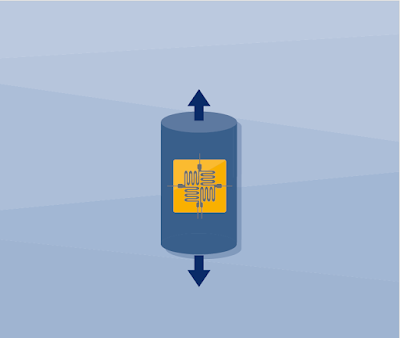
The diagram shows what a possible Wheatstone bridge circuit looks like: Here, four strain gauges are connected "in a ring".
Types of load cells:
There are different types of load cells for different applications. Commonly used ones include:
- Single point load cells: a load cell is located under a platform that is loaded with a weight from above
- Bending beam load cells: several load cells are positioned under a steel structure and are loaded with a weight from above
- Compressive force load cells: several high-capacity load cells are positioned under a steel structure that is loaded with a weight from above
- Tensile load cells: a weight is suspended from one or more load cells
Load cells can also be categorized based on the type of signal transmission: Digital load cells have built-in electronics used to process the measurement results and present them in prepared format. For analog load cells, an additional device – a measuring amplifier – is required.
Four strain gauges are positioned on the load cells below at the point where the greatest deformation occurs when force is applied. The arrow is pointing the direction of force application.

Compressive force load cell.

Bending beam load cell.

Single point load cell.

Tensile load cell.
Environmental effects on load cells:
One special feature of load cells is that the environment in which they are used plays a decisive role – in a number of ways.
Ambient temperatures:
Every material changes with temperature, expanding in response to heat and contracting in response to cold. Of course the same applies to load cells and their strain gauges. This also changes the electrical resistance of the conductor. Yet load cells must measure the correct weight everywhere in the world, regardless of the ambient temperature. To achieve this, a sophisticated temperature compensation mechanism is built into every HBM load cell.
Load cells must be able to withstand various effects. "Consider a truck scale: These scales are exposed to the elements: rain, dirt or heat – they have to be able to withstand outdoor ambient conditions. And we are talking world-wide: A truck scale in Siberia, for example, is exposed to different effects than one in South Africa. But they do have one thing in common: They must be designed for environments with severe weather and must therefore be correspondingly rugged," says Stefan Schmidt.

A truck scale fitted with HBM load cells.
Application of force in other directions ("parasitic forces"):
Depending on the technical environment in which a load cell is installed – for example in a system for weighing containers or in a weighing cell under a conveyor belt – other loads in addition to the weight may occur. "Parasitic forces" are forces acting on the load cell not only in the desired principal direction, but also from the side, from below or in some other way. The load cell was not developed for this purpose and the measurement results may be inaccurate or simply wrong. Care must therefore be taken during installation to ensure that there are no parasitic forces, or as few as possible. HBM load cell fittings and weighing modules help users minimize these parasitic forces and achieve precise measurement results.
Using load cells:
Of course load cells are often installed in scales. But there are also many other applications. Think of bottling plants or systems for filling bottles and cans by weight – with a load cell under every one. Or sorting systems for distributing candies or potatoes into bags so that they all have the same weight at the end of the process.
"It's astonishing how many applications require load measurements." - Stefan Schmidt.
And there are also unusual uses for load cells, as Schmidt points out: "For example, our PW15iA single point load cell is used in the development of high-performance triathlon apparel and swim wear: It measures the water resistance of suits for world class swimmers."
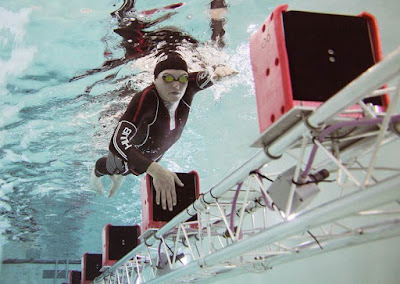
As part of its current research to demonstrate the effect of water resistance on various suits for world class swimmers, Huub Ltd. is introducing its new M16 system for measuring water resistance to the market. The system uses load cells type PW15iA from HBM.
Accuracy of load cells:
No matter what application a load cell is used in, accuracy plays an extremely important role. Load cells are available with different maximum capacities (the maximum capacity designates the maximum intended load) and accuracy classes. Strain gauge technology is primarily used to achieve classes C and D. Strain gauge load cells with electronic correction are used in some weighers in higher accuracy classes.
"Weight plays a leading role in industry because goods are sold primarily by weight." - Stefan Schmidt.
Because of this, weighing is strictly regulated. Use of different scales is permitted depending on the goods: For goods with low value (such as sand or gravel), the weigher does not need to be extremely precise – accuracy class D is sufficient. For pharmaceutical products, on the other hand, the highest accuracy classes A or B are required. The most common consumer goods such as meat, fruit and vegetables are weighed with accuracy class C, which already places high requirements on the accuracy of the weighing system that is used. But accuracy class C is also required in mechanical engineering or for building materials scale.
The strict rules and standards for weighing continually present new challenges to load cell developers. For load cells in the higher OIML accuracy class, a deviation in accuracy of only a few ppm (parts per million) of the measuring range of the load cell is permitted.
"It's impressive how accurately you can measure with a piece of steel and a strain gauge glued onto it," notes Stefan Schmidt. "But it can't be done without the necessary know-how. In recent years HBM has systematically achieved to increase the accuracy reached by many load cells. A continuing development process that never ends."
Adjustment, calibration and legal verification:
To ensure that a load cell works on site the way it actually should, it is usually not only adjusted and calibrated in the factory, but also verified at the installation location. Calibration and legal verification are processes in which the load cell is loaded with known weights for control purposes. If a kilo is resting on the load cell or weigher, then depending on the accuracy class, the indicated weight should also be one kilo, not 857 grams, for example. In this way, undesirable effects such as parasitic forces can also be detected.
Trends in load cell technology:
Load cells based on strain gauges can be used for a wide variety of applications and feature high accuracy. This precision can only be achieved with the appropriate know-how, which is based in turn on experience. HBM looks back on over 65 years of experience in the development of load cells and is continually working on new solutions to meet the requirements of tomorrow.
"Ten years ago customers often asked us what would come after strain gauge technology, since this proven technology was now being fully exploited. Of course we asked ourselves the same question," continues Stefan Schmidt. "But we determined in the course of our examinations that strain gauge technology is far from being fully exploited and there are still countless other possibilities for decisively improving our sensors and with them our customer's products." More precise, more rugged, faster, more intelligent – thus there is no foreseeable end to the technological development of load cells.

Stefan Schmidt, Product Manager for bending beam rocker pin load cells and weighing modules at HBM.






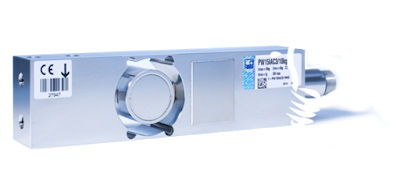
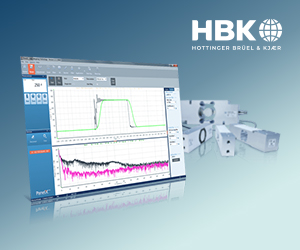

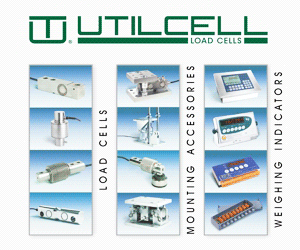


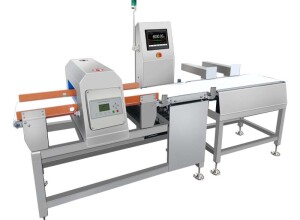
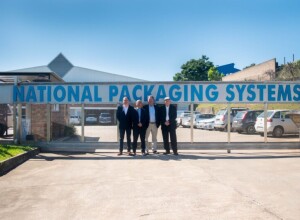
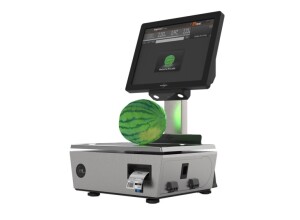



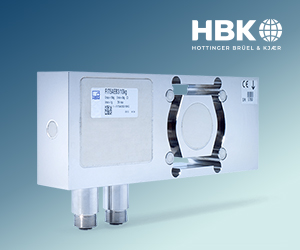


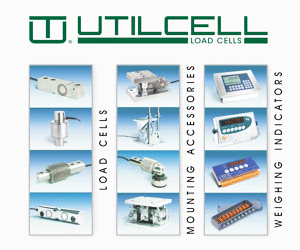
Interested? Submit your enquiry using the form below:
Only available for registered users. Sign In to your account or register here.